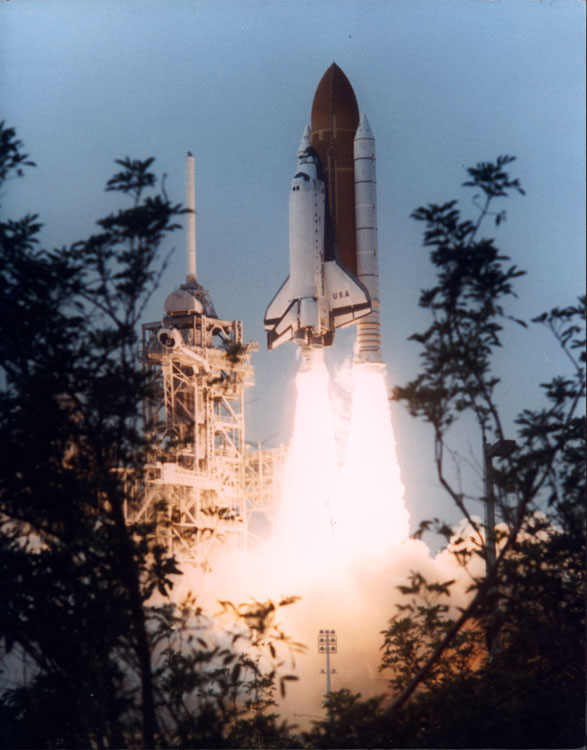Navigation Pane
-
Email the author:
-
-
Payload Delivery Systems
Pushing a vehicle into space takes a very large amount of force, for a sustained period of time. Rocket engines are the only technology we currently have access to that will provide these properties. Therefore, our rocket engines must be vastly powerful, and be able to work in the vacuum and cold of space. Rocket fuel is burned and ejected to produce thrust. Burning the fuel enables us to accelerate the mass of the fuel to a very high velocity; remembering that the higher the acceleration and the more mass ejected, the more thrust is generated.
A rocket engine uses the principle that states for every action there is an equal and opposite reaction. The gist of this physical law is that propelling some object/matter away from you requires a force, which is quantified by F = m * a, where F=force, m=mass of the object being propelled, and a=acceleration. So, the faster the matter is ejected away from the source, the more force is generated. Energy is the amount of force exerted over a time period.
October 1942 saw the first use of a modern rocket device, the German A-4 rocket, which was later named the V-2 after production began. All modern rockets are descended from this design.
The Space Shuttle contains a few of the most modern variants of the rocket engine design. It is a huge aircraft that is designed to be launched into space like a rocket, and to 'fly' back to Earth, to be re-used in later missions. It's three main onboard engines are the most powerful of their kind, each producing almost 500,000 lbs of thrust, which is the power equivalent of approximately seven Hoover dams. The amount of power produced is not without a price, however. It is also one of the most fantastically expensive vehicles ever built, and the main engines consume something on the order of 66, 600L/min. This is roughly the equivalent of consuming an ordinary swimming pool full of hydrogen and oxygen every 10 seconds!
Another type of payload delivery system is unmanned rockets. Far more of these computerized ballistic missiles are used to boost payloads such as satellites up into orbit, to spare the expense and risk of putting live human beings into orbit when their direct manipulation is not necessary.
The picture below was found at:
http://nix.nasa.gov
